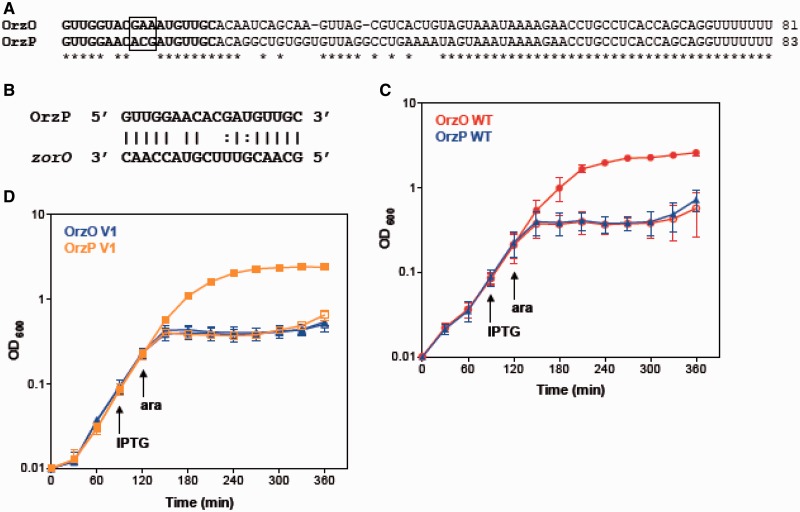Figure 4.
The V1 region is responsible for target discrimination by OrzO. (A) Alignment of OrzO and OrzP sRNAs. The V1 region is indicated in the black box; the entire base pairing region is in bold. (B) Potential base pairing interactions between OrzP and zorO in the predicted binding region. (C) OrzO, not OrzP, can repress zorO. Rescue experiment was performed as outlined in Figure 1B with either wild-type OrzO (red circles) or OrzP (blue triangles) expressed from the PLlacO-1 promoter of pBR-plac. Solid symbols indicate the addition of IPTG; open symbols, no IPTG. Averages ± standard deviations of three independent cultures are shown. (D) An OrzP V1 mutant can rescue cells from zorO overexpression. Rescue experiment was performed as outlined in Figure 1B using pBR-plac-orzP V1 (orange squares), in which its V1 region was mutated to match OrzO, and pBR-plac-orzO V1 (blue triangles), in which its V1 was mutated to match OrzP. Solid symbols indicate addition of IPTG; open symbols, no IPTG. Averages ± standard deviations for three independent cultures are shown.

